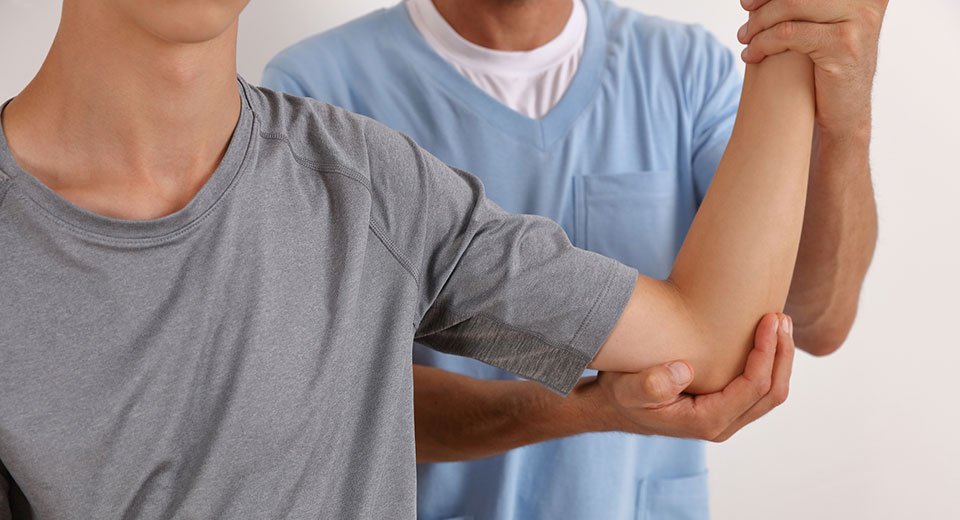Kids have orthopedic issues, too
When most people think about orthopedics, they think about an older population of patients with degenerative conditions. That is a misperception that sports medicine expert John Willis, MD, at Cape Cod Orthopaedics & Sports Medicine, wants to change.
Dr. Willis treats patients of all ages, including elementary school age kids. In younger patients, the conditions he treats tend to be injuries from playing sports.
“We treat everything from sprains and overuse injuries to ACL tears and shoulder dislocations,” he said. “ACL tears and shoulder dislocations are probably the most problematic for teenagers because they typically require surgery to fix.”
He sees a lot of injuries and maladies that are associated with growth or overuse. Overuse injuries include tight hamstrings or tight heel cords. Another problem is kids with loose joints. Both of those problems can be addressed with physical therapy. Tightness is solved by stretching the muscles, while looseness is fixed by strengthening the muscles around the joint to stabilize it. Braces also help stabilize the joint.
“Most of the non-operative things can be treated with physical therapy, because a lot of the times it involves a muscle imbalance,” Dr. Willis said.
He also sees athletes, especially those who pitch or throw balls, who have developed patterns of playing that include bad habits that can eventually lead to injury as they get older. Those are fairly easy to detect because there is a big asymmetry from one arm to the other. Those kids do well with physical therapy, but Dr. Willis also has referred kids to professional trainers or throwing coaches to try to undo some of those bad habits.
Catching those problems early can make a big difference because even if they muscle through high school through sheer grit, the breakdown often occurs if they go on to play college sports.
“I see a lot of that in the Cape League where you see kids breaking down because of maybe a little bit of bad form and maybe some bad shoulder mechanics that could have been addressed years earlier,” he said.
Surgery is Last Resort
Surgery is always a last resort option, but it is necessary for certain conditions like recurrent shoulder dislocations, ACL tears or bad fractures. For example, some collarbone fractures do much better with surgery than just splinting them. If the break pattern indicates that there will be a high likelihood of healing incorrectly, early surgery is better than waiting a few months for it to heal on its own. If it doesn’t heal properly, surgery might be necessary a few months down the road.
“If you see some of those patterns that may not heal well, or you can’t predict that they’re going to heal well, sometimes those will be treated surgically and the results actually are much better and much quicker, and you have kids back on the field in like six weeks,” Dr. Willis said.
Getting back on the field isn’t a priority for all kids but another very important consideration for Dr. Willis about whether or not to do surgery is the long-term implications of the injury. His goal is to set them up for long-term success. The best-case scenario is that the patient will heal as well as if the injury hadn’t occurred.
“Some surgeries we do because they’re going to help next season and some surgeries we do because it’s going to help them 20 years later,” he said. “I think we do a lot better job now than we did 20 years ago, and we do a way better job than we did 30 or 40 years ago at preventing problems down the road because we know more about it. I always have that discussion with the patients and their parents.”
Appointment Expectations
As the father of four kids who played sports and had a few scary injuries, Dr. Willis understands how important it is to see injured kids as soon as possible so he can figure out how to fix the problem and get them on the mend.
Typically, a first appointment will include an X-ray, done right at the office by an orthopedic-specialized X-ray team, and a physical exam. That gives Dr. Willis a pretty good idea about what is going on, but he usually orders an MRI to confirm the problem, especially with serious injuries that might need surgery. An MRI helps to fully characterize the problem.
One of the things that makes the patient’s experience smoother is that Cape Cod Orthopaedics & Sports Medicine is an all-inclusive medical office, Dr. Willis said. They have a brace fitter in the office who custom fits all of the braces. That person is also available if the brace needs to be adjusted at a later time. They also have a physical therapy practice right on site.
“The nice thing is everyone communicates with everyone, so everyone is on the same page,” he said. “We’re trying to build something streamlined so it’s easy for patients. It’s better care, too, because if a therapist has a question about the diagnosis or what the treatment plan is, they can pop upstairs or call us or text us. The communication is really nice because we know everybody.”
